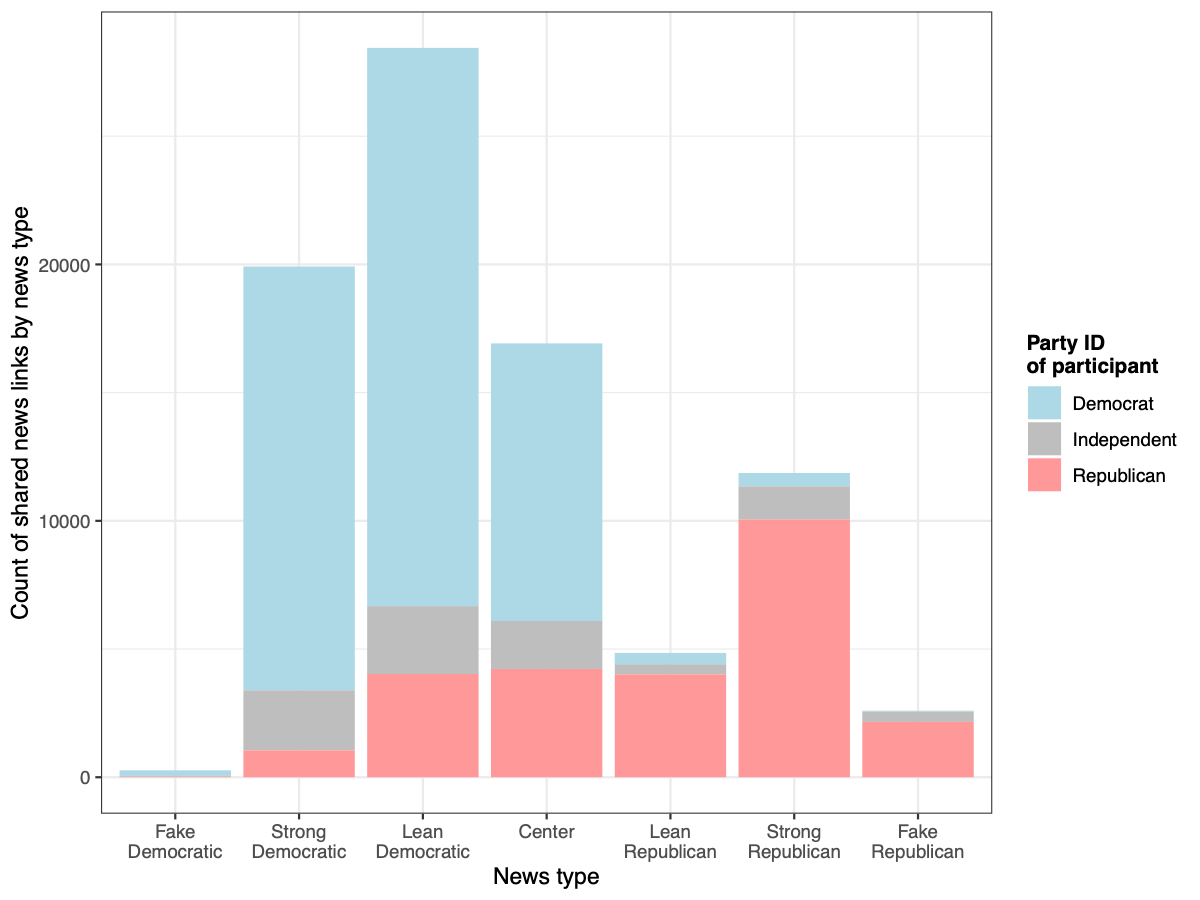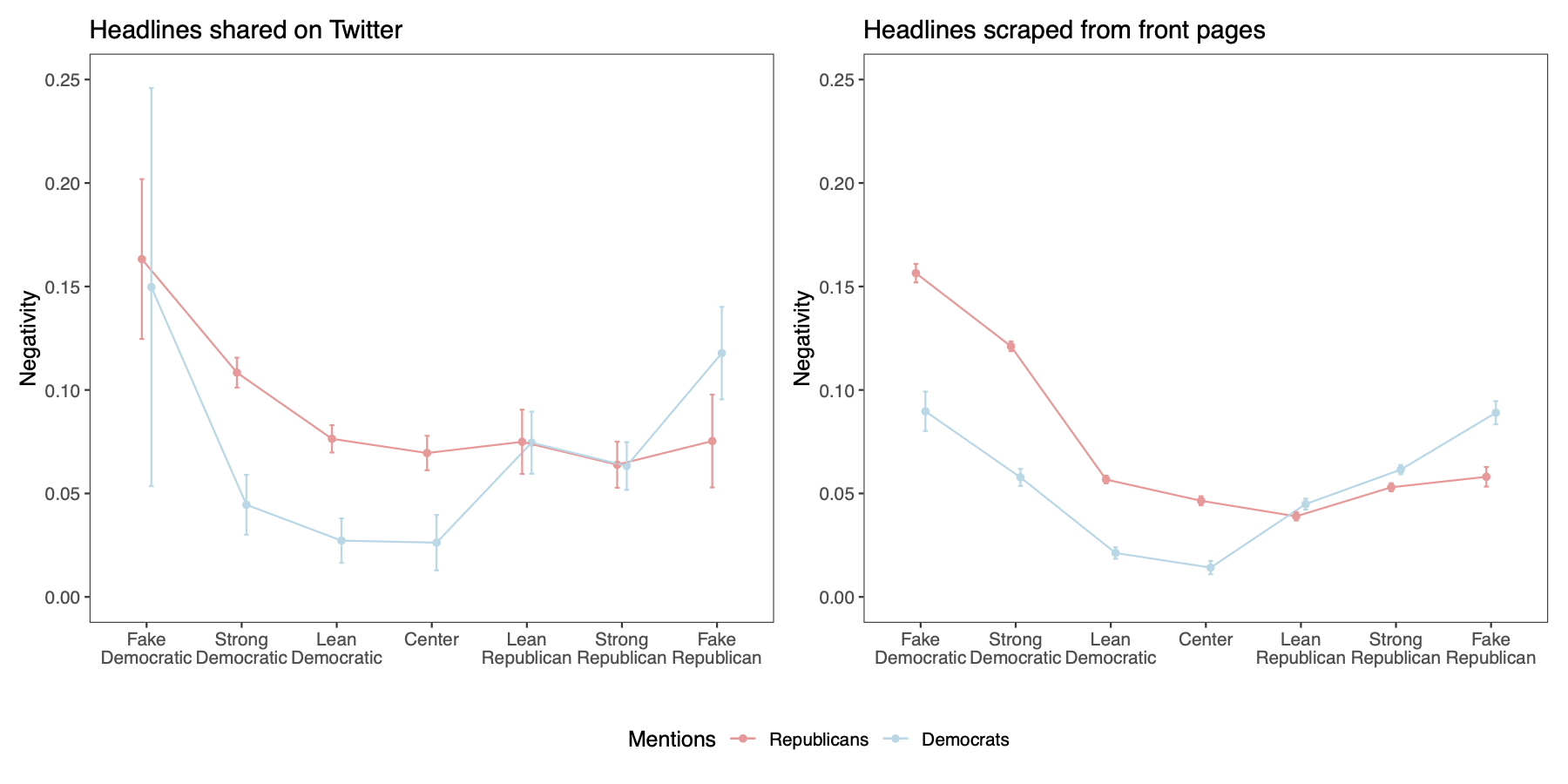If platforms and policymakers are to devise effective solutions to the proliferation of fabricated news stories online, they must first establish an understanding of why such material spreads in the first place. From misinformation around the COVID-19 pandemic to disinformation about the “Brexit” vote in Great Britain in 2016, fabricated or highly misleading news colloquially known as “fake news” has emerged as a major societal concern. But a good understanding of why such material spreads has so far remained somewhat elusive. Elite actors often create and spread fabricated news for financial or political gain and rely on bot networks for initial promotion. But mounting evidence (e.g., here, here and here) suggests that lay people are instrumental in spreading this material.
These findings give rise to a question we examine in a recent study: Why do some ordinary people spread fake news while others do not? The answer to this question has important practical implications, as solutions to the spread of fake news rest on assumptions about the root cause of the problem. The use of fact-checking efforts to reduce the proliferation of fake news, for example, rests on the assumption that citizens want to believe and share true information but need help to weed out falsehoods. If citizens are sharing news on social media for other reasons, there is good reason to believe counter-measures such as this will be less effective.
By examining the Twitter activity of a large sample of U.S. users, we found that the sharing of false news has less to do with ignorance than with partisan political affiliation and the news available to partisans for use in denigrating their opponents. While Republicans are more likely to share fake news than Democrats, the sharing of such material is a bipartisan phenomenon. What differs is the news sources available to partisans on either side of the political spectrum. In a highly polarized political climate, Democrats and Republicans both search for material with which to denigrate their political opponent, and in this search, Republicans are forced to seek out the fake-news extreme in order to confirm views that are increasingly out of step with the mainstream media. Seen from this perspective, the spread of fake news is not an endogenous phenomenon but a symptom of our polarized societies—complicating our search for policy solutions.
The sharing of fake news on Twitter
In order to examine the psychological motivations behind the sharing on Twitter of political fake news, we commissioned the YouGov survey agency to recruit 2,300 American Twitter users between mid-December 2018 and mid-January 2019 to complete a survey with detailed measures of the participants’ psychological and political profiles. The survey included questions about political party identification, positive and negative feelings toward Republicans and Democrats, as well as measures of political knowledge and the ability to think analytically rather than intuitively. We obtained permission to scrape participants’ tweets and link these data to the survey answers. We extracted 2.7 million tweets, which we then matched with comprehensive lists of news sources known to publish either true (i.e., “mainstream” media outlets) or false news articles. We also coded the news sources’ political slant (i.e., did they mostly publish pro-Democratic or pro-Republican content?). Taken together, our data allowed us to explore the amount and types of news articles that people share on Twitter and link these sharing patterns to the survey data.
We began our analysis by asking: How widespread was fake news sharing? The figure below answers this question by showing how many tweets contained links to different news source types, split by the party-political identification of participants. The news source types ranged from pro-Democratic fake news sources, to pro-Democratic mainstream news, to centrist sources, to pro-Republican mainstream news, and finally, to pro-Republican fake news.
The figure reveals that fake news account for a small part of participants’ news sharing activity on Twitter. Of the 2.7 million tweets in our data, 85,344 contained links to national news websites, and of these, a mere 3,269 originated from websites with a history of publishing fake news. These estimates are consistent with those obtained in previous studies (e.g., see here and here).
We observed a marked lopsidedness in the political slant of the shared fake news articles: A majority came from pro-Republican outlets and were shared by people who identified as Republicans. By contrast, about 60% of the mainstream news articles originated from pro-Democratic outlets (i.e., the “Strong Democratic” and “Lean Democratic” columns) and were predominantly shared by Democratic identifiers. These findings suggest that exposure to fake news on social media depends heavily on the political leanings of one’s network of friends and followers. For users connected mostly to Democrats, a tiny fraction of their daily news diet appears to come from fake news sources. By contrast, among users mostly following pro-Republican accounts the fake-to-mainstream news ratio is substantially higher on average.

Having examined the prevalence of fake news on Twitter, we arrive at the next puzzle: Who shares the most fake news? Based on the academic literature, we considered two prominent psychological accounts of fake news sharing. According to what we label the “ignorance” account, social media users want to share accurate and mainstream information, but the fast-paced nature of the Twitter platform combined with a lack of cognitive reflection and/or inattention means that people often end up sharing falsehoods. The “political polarization” account, by contrast, offers a very different explanation for what drives fake news sharing. It contends that in an ever more polarized American political climate, people are motivated to share news articles that are politically consistent with their partisanship, even when they recognize that the information comes from dubious sources and may not be true. This view implies that partisans want to share news articles—both true and false—that further their political agenda, either by praising their own party or denigrating the opposition.
In a nutshell, our results (see fig. 2 in the paper here) firmly favored the political polarization account. Political partisanship—and especially self-reported animosity towards the opposing party—strongly predicted fake news sharing. This relationship was strongest among Republicans with disdain for Democrats, who were much more willing to share pro-Republican fake news stories. In contrast, the survey measures associated with the ignorance account, such as cognitive reflection and political knowledge, were largely unrelated to fake news sharing.
Partisanship and out-party animosity also predicted the amount of news articles shared from mainstream news publishers. Our analysis showed that Democrats and Republicans were about equally willing to share mainstream news articles from sources that aligned with their political worldviews. This finding—that the same political factors predict sharing of both fake and mainstream news—is important. It suggests that from a psychological perspective, fake news is simply another (albeit extreme) source of “useful” information that partisans will share to advance their political goals.
Still, one important question lingers: Why were Republicans more eager than Democrats to share fake news? One possibility is that Republicans simply care less about editorial standards of fair and objective reporting. As fake news is not constrained by reality or editorial standards, such material can be excessive in their negative portrayal of political opponents, a feature that will likely attract partisans who demand partisan news and do not place much weight on objectivity anyway.
However, a competing explanation highlights differences in the supply of politically useful news content. Suppose that Republicans and Democrats are equally motivated to share news that confirm their political beliefs, but—and this is the critical assumption—most mainstream media outlets publish news articles that aligns with a Democratic worldview. Under this scenario, Republicans scanning the internet for political information to share must turn to fake news sources to find material that satisfies their partisan goal of derogating Democrats. On the flip side, Democrats fueled by the same partisan drive can stop their search at posts linking to mainstream media outlets since these publish news that are consistent with their political views.
To examine these alternative explanations, we subjected the headlines of the articles shared by participants to an automated sentiment analysis—essentially coding whether the tone of the headline was positive or negative—and identified the partisan affiliation of the politicians mentioned in those headlines. These data paint a picture of the most in-demand headlines among our users. To see whether these in-demand headlines are representative of headlines supplied by the news media, we scraped more than 500,000 news article headlines that had appeared between 2016 and 2019 on the front pages of some of the most popular news outlets in each category we study. We subsequently subjected these headlines to the same sentiment analysis. This allowed us to examine whether different news outlets portray politicians more or less negatively, depending on whether the politicians are members of the Republican or the Democratic Party.
The figure below shows the results of this headline sentiment analysis. The left side of the figure shows the negativity of news headlines shared on Twitter by the participants, depending on whether the headlines mention Republican or Democratic politicians. The right side of the figure provides the sentiment of headlines scraped from the front pages of news sites. The horizontal axes show different types of news outlets while the vertical axes show the headline sentiment, with higher values indicating more negative sentiments.

The figure reveals three interesting findings. First, political news published by centrist and pro-Democratic mainstream media describe Republican elites more negatively than Democratic elites. Second, pro-Republican mainstream media cover Republicans and Democrats equally negatively. Third, and most importantly, news articles from pro-Republican fake news sources are the only ones that consistently publish news that portray Democrats more negatively than Republicans.
We suspect this explains why Republicans find fake news more appealing than do Democrats. To get a steady supply of news that caters to their political tastes, Republicans must turn to more extreme news sources, including those known to publish falsehoods. Democrats, in contrast, will have to look no further than to centrist and pro-Democratic mainstream news sources to fulfill their partisan goals.
If correct, this conclusion has important ramifications. It suggests that Republicans and Democrats are not so different after all: Both groups want to share politically congruent information, but an asymmetry in the supply of politically useful news means that Republicans end up sharing more fake news. As such, fake news sharing is partisan business-as-usual and reflects a search for information to denigrate political opponents in a highly polarized political system.
It is important to note that this latter set of findings does not necessarily imply that the mainstream media system suffers from a liberal bias. Our data collection took place during an unusual time in American politics (e.g., a polarizing Trump presidency). This may have created a “bias in reality” which may have forced news outlets to cover political topics in certain ways.
From combating fake news to combating polarization
The immediate reaction to our findings may be one of relief. Fake news may not be a huge problem after all. Consistent with other studies (e.g., see here and here), our estimates show that the amount of fake news shared is much smaller than the amount of mainstream news shared and probably much less than many political observers have feared.
A moment of reflection, however, turns relief into alarm. What was believed to be a narrow problem of fake news sharing may only be the tip of the iceberg of a much broader problem, one that is much more difficult to solve. The problem is not that partisan animosity drives fake news sharing. The real concern is that partisan animosity drives all news sharing.
If fake news sharing was fueled by ignorance, the solution would be straightforward: Teach people how to identify fabricated news stories and remind them of the importance of sharing news articles from credible sources, and all should be fine. In fact, such interventions exist and seem to be successful in driving down social media users’ appetite for sharing falsehoods. But if partisan hatred drives the sharing of mainstream news as well, such an intervention would have little impact. In itself, each news article shared by a newly educated user may be true. But the total sum of news shared on Twitter by a given user fueled by partisan animosity is still likely to give a politically biased picture of the world. The real problem is not whether a single piece of news is true or false. Rather, the problem is the overall misrepresentation of political groups and events that flows from the sum of news stories shared by highly motivated partisans.
In fact, the focus on fake news may be a red herring. It distracts us not only from the real problem, but also from its causes. The key concern is not the social media platforms and the features that allow the rapid sharing of all manner of (mis)information. The real concern is an extraordinarily polarized American society, a state of affairs that has gradually worsened for decades prior to the emergence of Facebook, Twitter and YouTube. Social media platforms certainly have a responsibility to avoid exacerbating the spread of false information. But an exclusive focus on the responsibility of tech giants will distract us from understanding the deeper societal divides that breed polarization and the key responsibility of politicians in this regard. The real solution to polarization—and, by extension, fake news—must be built on difficult policy reforms that can reverse decades of increasing inequality and marginalization.

